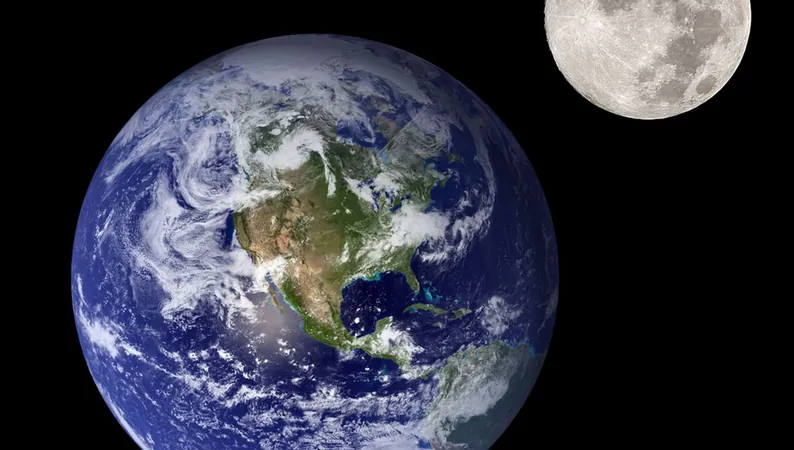
The Moon's Slow Drift: What It Means for the Future of Eclipses
2025-09-18
Author: Michael
Did you know that our moon is slowly drifting away from Earth? At a rate of about 3.8 centimeters (or 1.5 inches) per year, the moon’s distant dance might hold some fascinating implications for humanity—if we’re still around millions of years from now.
Thanks to groundbreaking technology from the Lunar Laser Ranging Experiment, scientists can measure the moon's changing distance with impressive precision. Reflectors placed by Apollo missions during the 60s and 70s allow lasers to bounce back to Earth, enabling researchers to pinpoint how far our celestial neighbor is moving away.
A Look Back in Time: Moon's Origins and Collision Course
The moon wasn’t always over 200,000 miles away. In fact, projections show that if we rewind the clock about 1.5 billion years, the moon would have collided with Earth—an impossibility since it predates that point by approximately 3 billion years.
The End of Total Solar Eclipses: A Distant Farewell
As the moon continues its gradual retreat, total solar eclipses will become a thing of the past. According to lunar scientist Richard Vondrak from NASA's Goddard Space Flight Center, we can expect our final breathtaking total solar eclipse to grace our skies in about 600 million years.
Interestingly, the current phenomenon of total eclipses, where the moon perfectly covers the sun, is due to a cosmic coincidence. The sun is around 400 times larger than the moon but also sits about 400 times further away, creating an illusion of equal size. Four billion years ago, the moon appeared almost three times larger in the sky, making for a much different celestial show.
The Moon's Eternal Bond with Earth
But don’t worry—while the moon will seem to shrink over time, it’s never truly leaving our orbit. In the distant future, before the moon can part ways, our sun will transition into a red giant, engulfing Earth.
In the grand scheme of cosmic events, the bond between the Earth and the moon remains unbreakable—but will humanity be around to watch it all unfold? Only time will tell.









 Brasil (PT)
Brasil (PT)
 Canada (EN)
Canada (EN)
 Chile (ES)
Chile (ES)
 Česko (CS)
Česko (CS)
 대한민국 (KO)
대한민국 (KO)
 España (ES)
España (ES)
 France (FR)
France (FR)
 Hong Kong (EN)
Hong Kong (EN)
 Italia (IT)
Italia (IT)
 日本 (JA)
日本 (JA)
 Magyarország (HU)
Magyarország (HU)
 Norge (NO)
Norge (NO)
 Polska (PL)
Polska (PL)
 Schweiz (DE)
Schweiz (DE)
 Singapore (EN)
Singapore (EN)
 Sverige (SV)
Sverige (SV)
 Suomi (FI)
Suomi (FI)
 Türkiye (TR)
Türkiye (TR)
 الإمارات العربية المتحدة (AR)
الإمارات العربية المتحدة (AR)